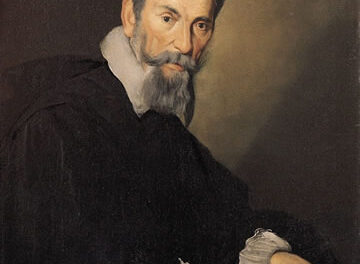Conductor Tonu Kalam choose a superb program of less often programmed Russian works to exploit the resources of his large student orchestra and to honor one of our state’s most significant proselytizers for classical music, Maxine Swalin. Her husband Benjamin Swalin led the peripatetic North Carolina Symphony from its rebirth, after WW II, and she designed its renowned educational program besides playing keyboards as needed. She passed away in 2009 at age 106. She would have basked in the glow of enthusiasm and talent from the UNC Symphony Orchestra in which she took special interest. Between the playing of the first two works, Kalam addressed the substantial Memorial Hall audience with brief program notes and a warm remembrance of Mrs. Swalin.
Mikhail Glinka (1804-1857) is often called the Father of Russian Music because of his efforts to establish principles of a nationalistic style in a culture previously dominated by imported foreign musicians. His second opera, Ruslan and Ludmila (1842), was based upon an exotic fairy tale by Aleksander Sergeevich Pushkin. The plot centers about the beautiful Ludmila, wooed by three suitors and eventually won, after a mix of both good and evil sorcery, by the handsome knight Ruslan. The Overture is an ideal fast-paced and short opener for concerts. Exclamatory chord progressions mix with scrambling scales in the strings in the opening. The first theme is a rollicking, soaring affair and is wickedly fast. A transitional passage with solo timpani and string pizzicatos leads to a second theme, a broad, gorgeous singing melody that begins in the lower strings and bassoon before being taken up by the full orchestra. Kalam’s players hit the ground running with crisp attacks and precise ensemble at a good, challenging fast tempo. Each string section played as one whether rapidly scurrying or digging into a ripe melody. An episode featuring agile, light playing by the first violins was impressive as was a long, sustained note by a pair of French horns. Timpanist Vincent Povazsay played very well.
Concerto No. 2 in G minor for Violin and Orchestra, Op. 63 (1935) marked a turning point in Sergei Prokofiev’s (1891-1953) career. The composer had voluntarily returned to the Soviet Union in 1933. Perhaps “socialist realism” contributed to the composer’s abandoning the harmonic harshness of his willfully “modern” earlier works for the graceful melodies, consonant harmonies, and sensuous orchestra color permeating this work. The solo violin opens the work playing the first, somber theme unaccompanied. Other instruments take it up, eventually leading to the flowing melody of the second theme, again allotted to the soloist. Both themes are interwoven over the course of development. The even more song-filled slow movement has the solo violin in a languorous serenade accompanied by plucked strings, the latter doubled by two clarinets. The opening melody refrain is used in three contrasted episodes. The last return features an evocative French horn solo. Insistent dance rhythms dominate the spirited finale.
Prokofiev hardly ever gives his violin soloist a break throughout all three movements. Faculty member Richard Luby turned in a brilliant, stylish interpretation, playing with fine intonation, a wide dynamic range, and a colorful rainbow of tone. The orchestra’s low strings produced a deep, rich sound. The wonderful slow movement came off particularly well with Luby spinning an endless melody over enchanting plucked strings. The fine clarinetists were Qiudi Zhang and Ted Mansfield, and the dreamy French horn solo was played by Lauren Anderson. The headlong rush of the finale swept all before it.
The Symphony No. 2 in C minor, Op. 17 (“Little Russian”) by Peter Ilyich Tchaikovsky (1840-1893) is a very apt pairing for a concert opened by a Glinka work. Tchaikovsky was criticized by contemporaries for being too influenced by Western European composers. Symphony No. 2 has the most nationalistic flavor of the composer’s six symphonies because it abounds in folk tunes from the Little Russia region better known as Ukraine. The composer heard the folk songs during a visit in the summer of 1872 to his beloved sister, Alexandra, and her husband, Leo Davidov, near Kiev. The symphony was premiered in 1873 but Tchaikovsky revised the first three movements extensively six years later and premiered it in 1881. The slow introduction features a melancholy solo for French horn derived from a Ukraine version of “Down by Mother Volga.” The fast-paced main section theme sounds like a folk tune and is set against a lyric oboe theme and leads to a brilliant climax. The slow movement makes use of a tragic wedding march from Tchaikovsky’s opera Undine, composed in 1869 and later destroyed. The Scherzo is dominated by rhythmic drive except for a capricious trio featuring the woodwinds. The finale, which Tchaikovsky himself liked best and left unchanged, applies ingenious harmonic, contrapuntal, and instrumental modifications on the Little Russian song “The Crane” and then combines it with an even more elaborate theme.
The exposed, long opening French horn solo (a few slight burbles aside) was well played by Lauren Anderson and it was flawless when it was repeated just before the first movement ended. The bassoon solo immediately following was very impressively played by Maggie Grossman. Strings were impressive as they exactly followed every abrupt shift in tempo. The teamwork of the brass and woodwind sections was outstanding throughout all four movements. The lyric oboe solo in the first movement was warmly phrased by Kiran Bhardwaj. Timpanist Kuntal Shah was striking in setting the steady march of the second movement with its attractive string pizzicatos and in the rousing finale. The last two movements were superbly played by every section. The many, varied repetitions of the “Crane” song in the finale were strongly characterized.











